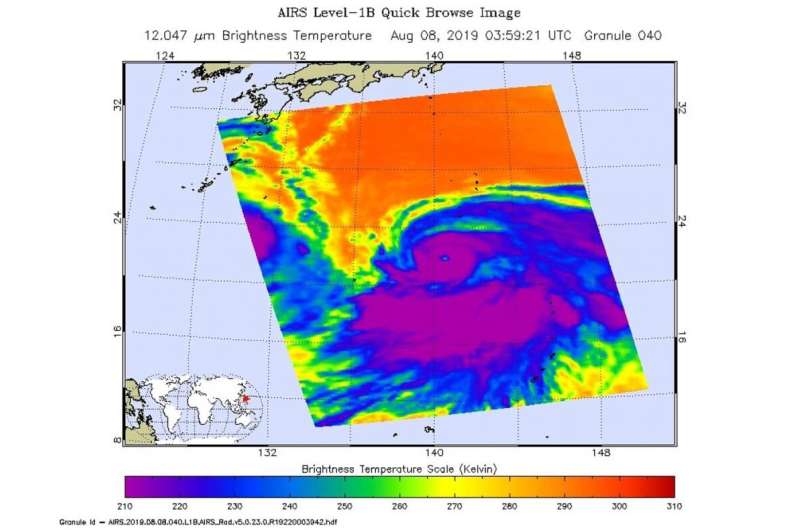NASA's Aqua Satellite finds a large ragged eye in Typhoon Krosa

Typhoon Krosa is a large storm moving through the Northwestern Pacific Ocean and infrared imagery from NASA's Aqua satellite revealed that the large typhoon also has a large eye.
Cloud top temperatures provide information to forecasters about where the strongest storms are located within a tropical cyclone. NASA's Aqua satellite took Typhoon Krosa's cloud top temperatures to get that information. NASA's Aqua satellite analyzed the storm on Aug. 7 at 11 p.m. EDT (0359 UTC) using the Atmospheric Infrared Sounder or AIRS instrument. The stronger the storms, the higher they extend into the troposphere, and they have the colder cloud temperatures. AIRS found coldest cloud top temperatures as cold as or colder than minus 63 degrees Fahrenheit (minus 53 degrees Celsius) around the eye and in large bands south and east of the center. Cloud top temperatures that cold indicate strong storms that have the capability to create heavy rain.
Early on Aug. 9, the Joint Typhoon Warning Center noted that infrared data revealed that Krosa has an eye that is 40 nautical-miles wide.
At 5 a.m. EDT (0900 UTC) on Aug. 9, the center of Typhoon Krosa was located near latitude 22.0 degrees north and longitude 141.2 degrees east. That puts the center of Krosa about 168 nautical miles south of Iwo To island, Japan. Krosa was slowly crawling toward the east. Maximum sustained winds were near 85 knots (98 mph/157 kph).
The Joint Typhoon Warning Center expects that Krosa will turn northwest, and pass to the southwest of Iwo To island, Japan. It is then to continue tracking northwest and pass east of Minami Daito Jima, Kadena and Amami Oshima, on its way to the four main islands of Japan. Krosa is also expected to weaken over the next five days.
Provided by NASA's Goddard Space Flight Center




















